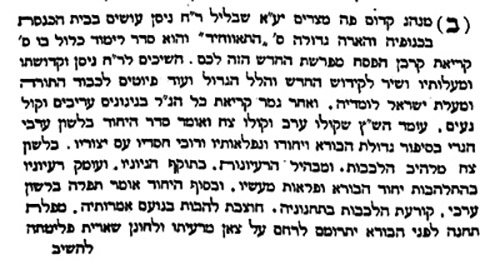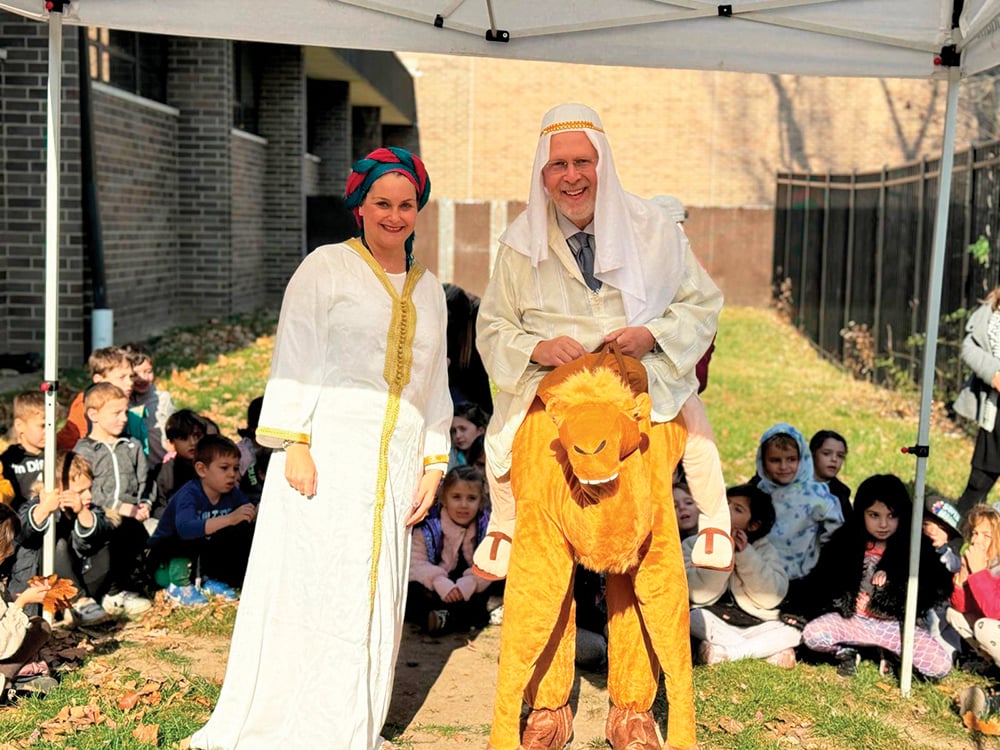

Part I
It is late March and the weather is still cold. The sounds of Middle Eastern music and exuberant conversation emanate from an elegant ballroom in Brooklyn, New York. No, it’s not a wedding or a bar mitzvah. A Torah scroll is unfurled and the cantor begins to read from Exodus 12:1, “And God spoke to Moses and Aaron in Egypt, ‘This month is to be for you the first month, the first month of your year.’” The reading is followed by the chanting of liturgical poetry based on this Torah portion, “Rishon hu lachem l’chodshei hashanah… Yom Nisan mevorach… The first month shall be for you for the months of the year… the month of Nisan is blessed.” As they leave the event, men and women wish each other “shana tova,” happy new year.
Something seems off. Rosh Hashanah, the traditional Jewish new year, is still six months away. Why the celebration and talk of a new year? This ritual is very familiar, however, to the members of Congregation Ahaba Veahva, a synagogue that follows the Egyptian-Jewish rite. It is a vestige of a very ancient, almost extinct Jewish custom called Seder Al-Tawhid (Arabic, Seder Ha-Yichud in Hebrew, the Ritual of the Unity). This ritual takes place annually on the first of Nisan. The name denotes a celebration of the unity of God and the miracles that He wrought during this month surrounding the Exodus from Egypt. The way the congregation celebrates it and how this custom survived illuminates important dynamics of how Jewish ritual has been standardized over time.
Ahaba Veahva’s members celebrate Rosh Hashanah in September like other rabbinic Jews. The Seder al-Tahwid, however, is a remnant of an ancient custom of the Jews of the Near East (variably referred to as Mustaribun or Shamim) to commemorate the first day of the Jewish month of Nisan as a minor Rosh Hashanah as per Exodus 12:1.
The only printed version of the Seder al-Tahwid liturgy is found in an anonymous 10-page pamphlet printed in Alexandria. The prayers focus on many themes found in the Rosh Hashanah prayers such as blessing, sustenance and messianic redemption in the year to come. The liturgy is found in a somewhat longer form in a 10th-century manuscript fragment from the Cairo Geniza, the repository of documents found in the late 19th century in the synagogue in old Fustat.
The celebration of al-Tahwid begins with special liturgy on the Sabbath closest to the day, and on the day itself the community refrains from unnecessary labor, similar to intermediate days of Jewish holidays. They also recite a Kiddush (a prayer that sanctifies a day, recited over a cup of wine) followed by a festive meal and the recitation of liturgical poetry. One such poem presents a debate among the 12 months to determine which one will have primacy. In one stanza, for example, Nisan argues that the following month of Iyar cannot be chosen since its zodiac sign is Taurus, the same species as the golden calf that Israel made in the wilderness. The concluding stanza is a triumphal declaration from Nisan: שליט אנא וריש על כולן, literally, I am the ruler and the head of all of you.
תקיפה עבדי פרוק לעמיה ובי הוא עתיד למפרוק יתהון, A deliverance of slavery did I [Nisan] impart upon the nation, and in me [Nisan] is He [God] destined to deliver them [again] (as per BT Rosh Hashanah 10B). Other prayers more explicitly cast the day as the beginning of the new year. One liturgical poem begins: יהי רצון מלפניך ה’ אלוקינו ואלוקי אבותינו…שתהיה השנה הזאת הבאה עלינו לשלום, translated as “May it be Your will, Lord our God and the God of our fathers…that this coming year should come upon us in peace.”
The celebration of the first of Nisan as the beginning of the new year is rooted both in biblical, extra-biblical and Talmudic sources. Exodus 12:1-2 states that Nisan is the first month in the intercalation of the new year. In the book of Ezekiel (45:18-19) we find:
“Thus saith the Lord God: In the first month, on the first day of the month, thou shalt take a young bullock without blemish; and thou shalt purify the sanctuary.”
Ezekiel contains many laws and festivals that are not found in the Pentateuch. Many interpret these as being meant for a future (third) Temple. Ezekiel does not explicitly describe the first of Nisan as a celebration of the new year per se, but this description is nonetheless the earliest evidence of the day having special significance.
We find a similar reference in the Temple Scroll (11Q19) of the Dead Sea Scrolls. The Temple Scroll describes the ideal Temple of the Qumran sectarians. The Festival of the first day of the first month (Nisan) is one of three additional extra-biblical festivals that are mentioned in the Dead Sea Scrolls:
“On the first day of the [first] month [the months (of the year) shall start; it shall be the first month] of the year [for you. You shall do no] work. [You shall offer a he-goat for a sin-offering.] It shall be offered by itself to expiate [for you. You shall offer a olah: a bullock], a ram, [seven yearli]ng ram lambs [without blemish] … [ad]di[tional to the bu]r[nt-offering for the new moon, and a grain-offering of three tenths of fine flour mixed with oil…”
The Mishnah in Tractate Rosh Hashanah 1:1 describes the first of Nisan as one of the four beginnings of the Jewish New Year:
“There are four new years. On the first of Nisan is the new year for kings and for festivals. On the first of Elul is the new year for the tithe of cattle. … On the first of Tishrei is the new year for years, for release and jubilee years, for plantation and for [tithe of] vegetables… On the first of Shevat is the new year for trees…”
In an article on the Seder al-Tahwid liturgy found in the Geniza, liturgical scholar Ezra Fleischer postulated that the Kiddush ceremony on the holiday was based on an earlier Mishnaic-era institution. The Mishnah in Rosh Hashanah 2:7 describes how the Sanhedrin consecrated the new month by declaring “it is sanctified,” at which point the entire assemblage would respond in kind, “It is sanctified, it is sanctified.” This declaration was performed with pomp and publicity in order to make it clear that the final word in the intercalation of the Jewish calendar belonged to the rabbis of Eretz Yisrael and no one else. In the context of the Seder al-Tahwid, this ritual serves to highlight Nisan’s role as the first month of the Jewish lunar year, the beginning of this process of sanctifying the new moon.
(To be continued next week…)
The author is available for speaking engagements and can be reached at [email protected]













